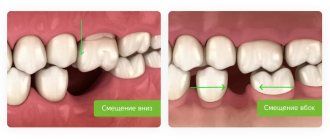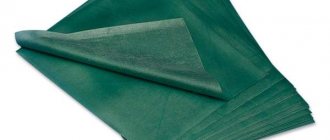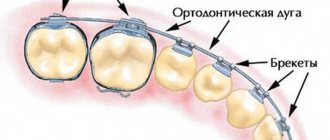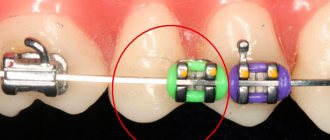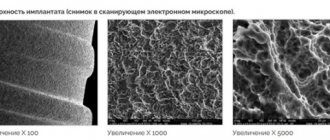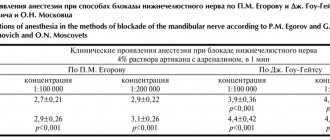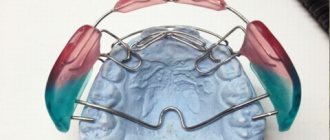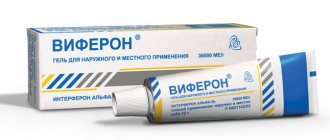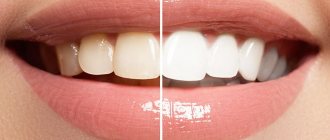What are plates?
The standard dental plate is a simple design, which consists of a plastic base and several metal hooks with which it is attached to the teeth. In addition, each plate has a special fixing arch, which, through its pressure, affects the position of the dentition.
There is a screw inside these plates. It holds the two halves of the artificial sky together, leaving a gap between them. Throughout the entire wearing period, this screw is tightened or tightened from time to time. In this way, it is possible to correct the location of the fixing arch and, thereby, align the desired area of the dentition or an individual tooth.
Differences between removable and permanent braces
The first can be considered a lightweight option. Such arcs:
- cheaper than those that cannot be removed independently;
- not very effective for noticeable problems, more suitable for maintenance therapy.
What does a removable dental plate look like? This is a structure made of soft plastic, it is attached to metal hooks by the teeth. Children's options are often decorated with sparkles or made colorful to make them more pleasant for the child to use.
An undoubted advantage is that this option can not be worn all the time, getting rid of the device during meals, and in some cases during sleep (as prescribed by a doctor). However, they need to be used as often as possible, otherwise there will be no visible effect: sometimes even a break of one day significantly complicates the treatment.
What problems do plates help with?
Plates are the simplest orthodontic instrument. Accordingly, they are used to solve minor defects in bite or position of teeth in the dentition. The standard case when a patient is prescribed to wear such a device is incorrect placement of the incisors. In this case, the structure is made in such a way that the main pressure falls on the desired tooth.
Another defect, which is a prerequisite for using this method, is abnormal expansion or narrowing of the jaw. In this case, the patient may experience the appearance of a gap between the teeth. In this case, the structure is adjusted so as to put pressure on the entire plane of the dentition.
A dental plate is also prescribed in other cases when slight curvatures of an individual tooth or dentition have been noticed in a child or adult.
Rules for daily hygiene care
To clean the mouthguard, it is enough to purchase an additional brush with soft bristles (too hard can lead to scratches). Full hygiene procedures should be carried out in the morning and evening - you need to brush your teeth in a completely traditional way. The procedure is as follows:
- brush your teeth,
- rinse the mouthguard under running warm water,
- clean the inner and outer surfaces of the aligner with a brush and adding a small amount of toothpaste (can be replaced with regular baby soap),
- rinse thoroughly with warm running water,
- fix on teeth.
When should you put a plate on your teeth?
Dental plates are often prescribed for children. Their teeth are more pliable, which means correction of defects is easier. If a child has noticed any irregularities in the location of the dentition, it is recommended to install a plate as soon as possible. There is no need to rush only if the child’s jaw is not yet fully formed, that is, not all teeth have fully grown. In this case, the plate may cause more harm than good and negatively affect the position of the unformed tooth.
Despite the fact that the effect of the technique is greater in childhood, they can also be prescribed for adults. Most often this happens in cases where the curvatures are purely aesthetic in nature and are minor. Typically, this method is used to correct minor malocclusions in adults. If the violations are more serious, a plate is unlikely to solve them. In such cases, it is better to give preference to braces or other modern techniques.
Advantages and disadvantages
The main advantage of the record is its low price. Anyone can afford to use this method by contacting any nearest dental clinic. This design is made from budget materials, due to which its price always remains reasonable. In addition, the installation procedure itself does not require much time and effort. This allows you to save significantly on it.
A big plus is that the plate does not have any negative effect on tooth enamel. The materials used for its manufacture do not react with the tooth surface, which means they leave it completely healthy. In addition, the brushing process itself with a plate allows you to completely brush the entire surface of the tooth, which cannot be done when using braces. Thus, after the end of the treatment period, additional teeth cleaning or whitening is not required.
As for the disadvantages, in this case we can highlight the following:
- The plate is not able to solve significant defects in the dentition. It is used only for the correction of minor curvatures.
- Wearing the plate in the early stages may cause discomfort for the patient due to its large size. However, over time, a person gets used to it and stops noticing the structure in his mouth.
- In the first days of using the plates, minor speech defects may be observed, which completely disappear over time.
Often, after several weeks of wearing the structure, the patient completely gets used to it, and it does not bring him any discomfort. In addition, he can always turn to a specialist to eliminate certain design flaws in order to make it as convenient as possible for use.
How to clean records
A budget option is microfiber cloths. They can easily remove simple contaminants: dust on the surface, dirt and grease from your fingers. On the other hand, microfiber particles can become clogged in the sound grooves. To clean the record more thoroughly and, most importantly, without consequences, you need to use special brushes.
The most advanced option is a vinyl cleaning machine. It, in combination with a cleaning liquid, gives the best result, completely removing dirt from the records.
Types of plates for teeth
Plates for teeth are divided into two main types:
- removable;
- permanent.
The differences lie in the specifics of wearing the plates. Removable structures can be removed at any convenient time when the patient needs it. For example, for more comfortable chewing of hard food or self-tightening of the adjusting screw. However, dentists do not recommend doing this too often, since the effect of such treatment may be minimal. It is especially important to leave the dental guard in your mouth while you sleep. In general, the period of wearing the structure should be at least 22-23 hours a day.
As for permanent ones, they are installed and removed exclusively by a specialist. Such devices are used for more serious dental defects. They are also often prescribed to young children, who may not listen to the doctor’s recommendations and independently remove the plate for a long time, for example, to go to school.
Store records in special sleeves
After listening to the record, put it back in the envelope so that it doesn’t gather dust or you accidentally spill something on it. At the same time, if you often listen to a record, take it out and put it back and forth, then the original sleeve will sooner or later become unusable. In addition, regular paper sleeves can scratch the record. A scratched section of the record will sound distorted, and if the damage is severe, it may not play at all.
Photo heidl / Public Domain Mark 1.0
Envelopes are divided into outer and inner. External ones can be anything - as long as you like them. And the internal ones should protect the records from dust, scratches, and the accumulation of static electricity, so you shouldn’t choose just which ones. It is best to use plastic or polypropylene envelopes.
Manufacturing and installation
Each of the plates is made exclusively to individual order, based on the specific structure of the dentition of each individual patient. To do this, the specialist makes an impression, which will become the basis for the manufacture of the structure. The patient may first be prescribed a dental x-ray, which will reveal any hidden damage that could also affect the general condition of the jaw.
When the cast is ready, it takes a little time to make a preliminary layout. Next, the patient is given an appointment to try it on. If the design is suitable and the person feels comfortable with it, a real plate is made for him.
The structure is put on the dentition directly at the doctor’s appointment so that the specialist can set the optimal pressure level using a screw. Next, you need to visit a doctor at least once a month to correct the pressure on the dentition.
Plate efficiency
It is important to understand that the effectiveness of a device such as a dental plate depends on many factors. The first is the degree of damage to the dentition. The smaller the curvature, the greater the chances of ultimately getting a high-quality result from such treatment. The second is the age at which the structure was installed. You should start using a plate to straighten your teeth as early as possible.
In addition, the final effect also depends on how correctly the patient used the device - how often he removed it, how he cleaned it and tightened the screw. In each specific case, it is very important to correctly follow the recommendations of the attending physician, because only then the result will be truly positive.
How long should I wear the plates?
The period of wearing the plates varies in each specific case. It is often around one to two years. However, there are cases when this time is not enough to eliminate the defect. In this case, the patient is extended the treatment period, or some other methods are prescribed.
Plate care
Plates for teeth straightening, unlike braces, do not require special care. You don't need to buy any special tools for them. It is enough to remove such a structure during cleaning and also clean it separately. To do this, you can use a regular toothbrush and toothpaste. It is important to do this carefully so as not to damage the parts or change the tension of the screw.
If the patient wears a permanent structure, it should also be cleaned during oral hygiene. You can also use an additional rinse to get rid of bacteria in the spaces between the plate and the teeth.
To extend the life of the structure, it is not recommended to eat too hard foods, such as nuts, without first removing the structure from your mouth. It is also better not to drink very hot drinks or eat sweets with dyes. In this case, stains may appear on the dental plate.
What are the dangers of neglecting hygiene?
Dentures are made from high-quality polymers. These are artificial materials, but their appearance in place of lost natural teeth does not protect against the growth of bacteria. Pathogenic microorganisms do not disappear from the oral cavity. Settled on the inserted structures, they continue their destructive activities. If left unchecked, within a couple of years your snow-white, highly polished dentures may turn into dull, darkened items with stains and scratches.
The reason is the plaque that forms from tea, coffee, nicotine, and food debris. It must be removed, otherwise over time the film that forms on the teeth will become thicker and darker. This may cause:
- the appearance of tartar;
- bad breath;
- discomfort when chewing and communicating;
- development of periodontitis, halitosis, stomatitis, gingivitis.
Many dental pathologies take a long time and are difficult to treat. To protect yourself from unpleasant consequences, use denture cleansers. This will preserve their integrity, functionality and aesthetics.
